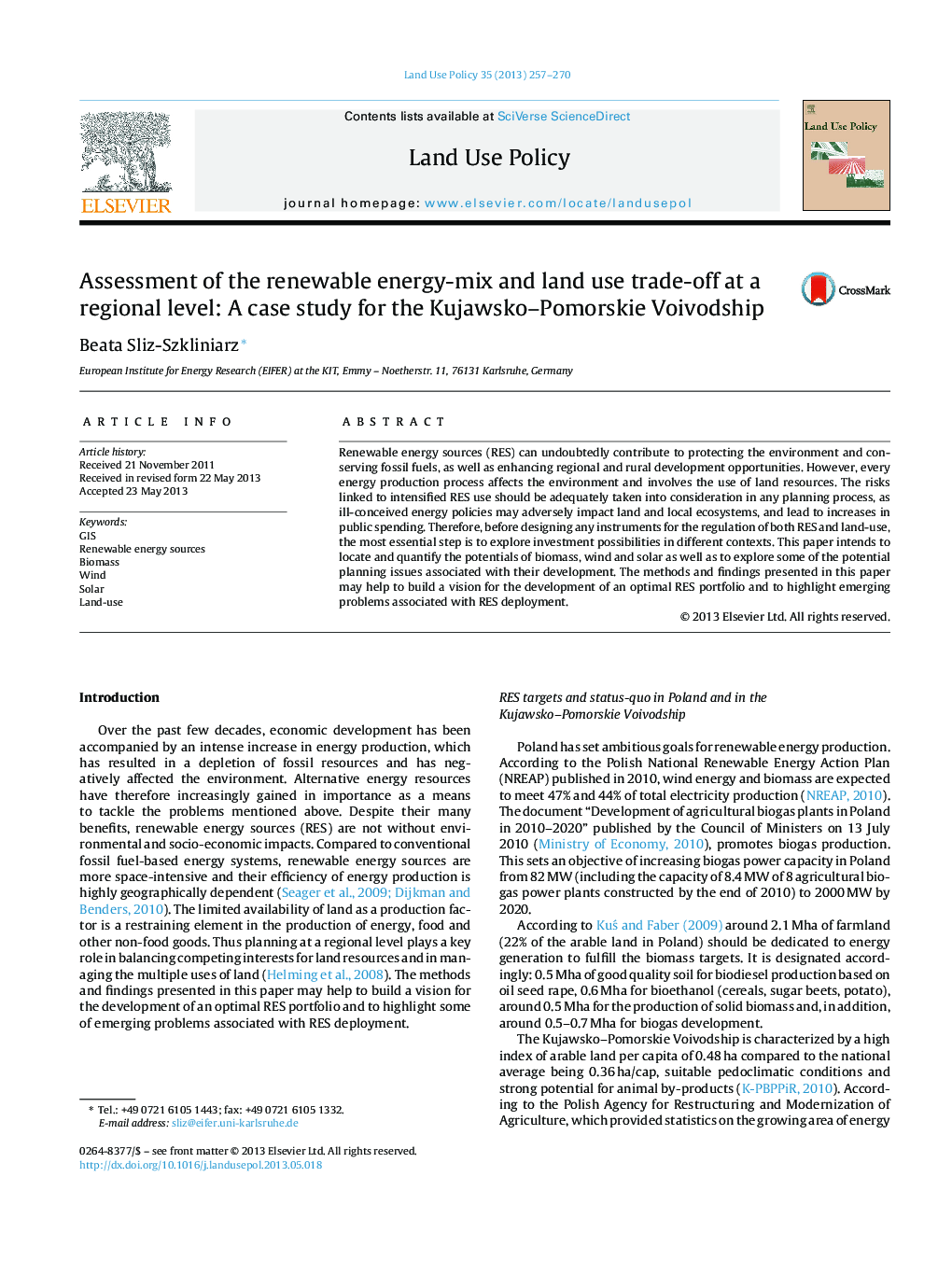| کد مقاله | کد نشریه | سال انتشار | مقاله انگلیسی | نسخه تمام متن |
|---|---|---|---|---|
| 93183 | 160116 | 2013 | 14 صفحه PDF | دانلود رایگان |
• The method allows to analyze region-specific challenges in the context of sustainable cross-renewable resources development.
• The alternative energy sources (wind, biomass, solar) were set in contrast with each other in order to gain a comprehensive insight into the potential of energy-mix and the related land use trade-off.
• The author explored investment possibilities and constraints in RES and land usage.
• The method and findings may support the decision-making on energy planning and the development of measures that enhance a sustainable spatial development.
Renewable energy sources (RES) can undoubtedly contribute to protecting the environment and conserving fossil fuels, as well as enhancing regional and rural development opportunities. However, every energy production process affects the environment and involves the use of land resources. The risks linked to intensified RES use should be adequately taken into consideration in any planning process, as ill-conceived energy policies may adversely impact land and local ecosystems, and lead to increases in public spending. Therefore, before designing any instruments for the regulation of both RES and land-use, the most essential step is to explore investment possibilities in different contexts. This paper intends to locate and quantify the potentials of biomass, wind and solar as well as to explore some of the potential planning issues associated with their development. The methods and findings presented in this paper may help to build a vision for the development of an optimal RES portfolio and to highlight emerging problems associated with RES deployment.
Journal: Land Use Policy - Volume 35, November 2013, Pages 257–270
